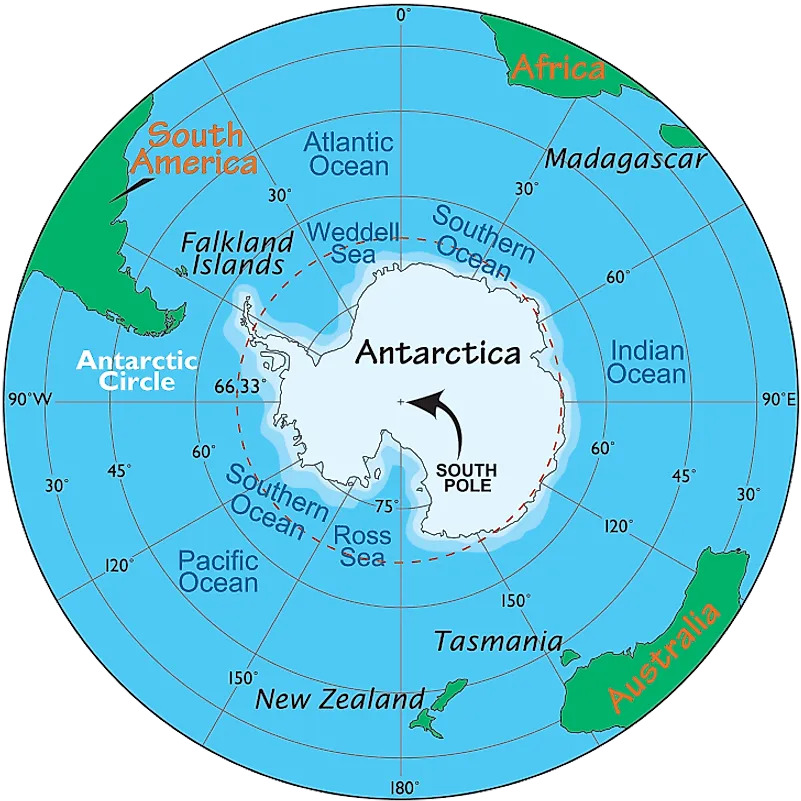International Relations
Antarctic Treaty
- 24 Jun 2021
- 7 min read
Why in News
Recently, the 60th anniversary of the Antarctic Treaty was celebrated.
- The Antarctic treaty remains the only example of a single treaty that governs a whole continent.
- It is also the foundation of a rules-based international order for a continent without a permanent population.
Key Points
- About:
- The Antarctic Treaty was signed between 12 countries in Washington on 1st December 1959 for making the Antarctic Continent a demilitarized zone to be preserved for scientific research only.
- The twelve original signatories are Argentina, Australia, Belgium, Chile, France, Japan, New Zealand, Norway, South Africa, the Union of Soviet Socialist Republics, the UK and the US.
- It entered into force in 1961 and has since been acceded by many other nations.
- Antarctica is defined as all of the land and ice shelves south of 60°S latitude.
- Recently, an enormous iceberg 'A-76' has calved from the western side of the Ronne Ice Shelf, lying in the Weddell Sea, in Antarctica.
- The Antarctic Treaty was signed between 12 countries in Washington on 1st December 1959 for making the Antarctic Continent a demilitarized zone to be preserved for scientific research only.
- Members:
- Currently it has 54 parties. India became a member of this treaty in 1983.
- Headquarters:
- Buenos Aires, Argentina.
- Major Provisions:
- Promoting the freedom of scientific research.
- Countries can use the continent only for peaceful purposes.
- Prohibition of military activities, nuclear tests and the disposal of radioactive waste.
- Neutralising territorial sovereignty, this means a limit was placed on making any new claim or enlargement of an existing claim.
- It put a freeze on any disputes between claimants over their territories on the continent.
- Dispute & Resolution:
- There have been tensions from time to time. Argentina and the UK, for instance, have overlapping claims to territory on the continent.
- However, a key reason why the treaty has been able to survive has been its ability to evolve through a number of additional conventions and other legal protocols.
- These have dealt with the conservation of marine living resources, prohibitions on mining, and the adoption of comprehensive environmental protection mechanisms.
- As disputes have arisen over the years, many have been addressed through the expansion of the treaty framework with these agreements. This framework is now referred to as the Antarctic Treaty System.
- Antarctic Treaty System:
- About:
- It is the whole complex of arrangements made for the purpose of regulating relations among states in the Antarctic.
- Its purpose is to ensure in the interests of all mankind that Antarctica shall continue forever to be used exclusively for peaceful purposes and shall not become the scene or object of international discord.
- It is a global achievement and has been a hallmark of international cooperation for more than 50 years.
- These agreements are legally binding and purpose-built for the unique geographical, environmental and political characteristics of the Antarctic and form a robust international governance framework for the region.
- Major International Agreements of the Treaty System:
- The 1959 Antarctic Treaty.
- The 1972 Convention for the Conservation of Antarctic Seals.
- The 1980 Convention on the Conservation of Antarctic Marine Living Resources.
- The 1991 Protocol on Environmental Protection to the Antarctic Treaty.
- About:
Indian Antarctic Programme
- About:
- It is a scientific research and exploration program under the National Centre for Antarctic and Ocean Research (NCPOR). It started in 1981 when the first Indian expedition to Antarctica was made.
- NCPOR is the nodal agency for planning, promotion, coordination and execution of the entire gamut of polar and southern ocean scientific research in the country as well as for the associated logistics activities.
- It was established in 1998.
- Dakshin Gangotri:
- Dakshin Gangotri was the first Indian scientific research base station established in Antarctica, as a part of the Indian Antarctic Program.
- It has weakened and become just a supply base.
- Maitri:
- Maitri is India’s second permanent research station in Antarctica. It was built and finished in 1989.
- Maitri is situated on the rocky mountainous region called Schirmacher Oasis. India also built a freshwater lake around Maitri known as Lake Priyadarshini.
- Bharti:
- Bharti, India’s latest research station operation since 2012. It has been constructed to help researchers work in safety despite the harsh weather.
- It is India’s first committed research facility and is located about 3000 km east of Maitri.
- Other Research Facilities:
- Sagar Nidhi:
- In 2008, India commissioned the Sagar Nidhi, for research.
- An ice-class vessel, it can cut through the thin ice of 40 cm depth and is the first Indian vessel to navigate Antarctic waters.
- Sagar Nidhi:
Way Forward
- While the Antarctic Treaty has been able to successfully respond to a range of challenges, circumstances are radically different in the 2020s compared to the 1950s. Antarctica is much more accessible, partly due to technology but also climate change.
- More countries now have substantive interests in the continent than the original 12. Some global resources are becoming scarce, especially oil.
- There is considerable speculation as to China’s interests in Antarctic resources, especially fisheries and minerals, and whether China may seek to exploit weaknesses in the treaty system to secure access to those resources.
- Therefore, all of the treaty signatories, but especially those with significant stakes in the continent, need to give the future of the treaty more attention.







